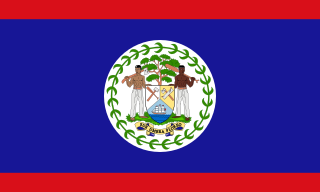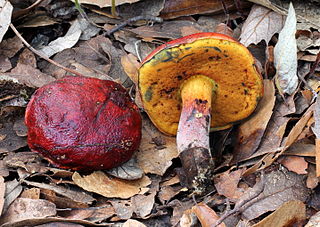
Belize is a country on the north-eastern coast of Central America. It is bordered by Mexico to the north, the Caribbean Sea to the east, and Guatemala to the west and south. It also shares a water boundary with Honduras to the southeast. It has an area of 22,970 square kilometres (8,867 sq mi) and a population of 441,471 (2022). Its mainland is about 290 km (180 mi) long and 110 km (68 mi) wide. It is the least populated and least densely populated country in Central America. Its population growth rate of 1.87% per year is the second-highest in the region and one of the highest in the Western Hemisphere. Its capital is Belmopan, and its largest city is the namesake city of Belize City. Belize is often thought of as a Caribbean country in Central America because it has a history similar to that of English-speaking Caribbean nations. Belize's institutions and official language reflect its history as a British colony.

Jacob Christopher "Tito" Ortiz is a retired American mixed martial artist and a former politician. Ortiz is best known for his stints with the Ultimate Fighting Championship (UFC), where he is a former Light Heavyweight Champion, having held the title from April 14, 2000, to September 26, 2003. Along with fighters like Randy Couture and Chuck Liddell, he was one of the sport's early stars. Ortiz ultimately became the biggest pay-per-view draw of 2006 for his fights with Liddell, Forrest Griffin, and Ken Shamrock.

Howler monkeys are the most widespread primate genus in the Neotropics and are among the largest of the platyrrhines along with the muriquis (Brachyteles), the spider monkeys (Ateles) and woolly monkeys (Lagotrix). The monkeys are native to South and Central American forests. They are famous for their loud howls, which can be heard up to three miles away through dense rain forest. Fifteen species are recognized. Previously classified in the family Cebidae, they are now placed in the family Atelidae. They are primarily folivores but also significant frugivores, acting as seed dispersal agents through their digestive system and their locomotion. Threats include human predation, habitat destruction, illegal wildlife trade, and capture for pets or zoo animals.

The Yucatán black howler, or Guatemalan black howler, is a species of howler monkey, a type of New World monkey, from Central America. It is found in Belize, Guatemala and Mexico, in and near the Yucatán Peninsula. It lives in evergreen, semideciduous and lowland rain forests. It is also known as the baboon in Belize, although it is not closely related to the baboons in Africa.

Xerocomus is a genus of poroid fungi related to Boletus. Many mycologists did not originally recognize the distinction between the two genera and placed Xerocomus taxa in genus Boletus. However, several molecular phylogenetic studies have demonstrated that Xerocomus is a heterogeneous genus of polyphyletic origin, which has resulted in further division of Xerocomus into Xerocomellus and Hemileccinum. The members of the genus Xerocomellus are more closely related to Boletus than true Xerocomus is, which is relatively distantly related to Boletus and more closely related to Phylloporus. Other former Xerocomus species have since been moved to Aureoboletus, Imleria, Hortiboletus and Rheubarbariboletus.
Boletus pseudofrostii is a species of bolete fungus in the family Boletaceae. Found in Belize, it was described as new to science in 2007.
Boletellus belizensis is a species of bolete fungus in the family Boletaceae. Found in Belize, it was described as new to science in 2007.
Boletus brunneopanoides is a species of bolete fungus in the family Boletaceae. Found in Belize, it was described as new to science in 2007.
Boletus neotropicus is a species of bolete fungus in the family Boletaceae. Found in Belize, it was described as new to science in 2007.
Boletus projectelloides is a species of bolete fungus in the family Boletaceae. Found in Belize, it was described as new to science in 2007.
Boletus roseoareolatus is a species of bolete fungus in the family Boletaceae. Found in Belize, it was described as new to science in 2007.
Boletus brunneotomentosus is a species of bolete fungus in the family Boletaceae. Found in Belize, it was described as new to science in 2007.
Boletus rugulosiceps is a species of bolete fungus in the family Boletaceae. Found in Belize, it was described as new to science in 2007.
Leccinum violaceotinctum is a species of bolete fungus in the family Boletaceae. Found in Belize under Pinus caribaea and Quercus spp, it was described as new to science in 2007.
Xerocomus belizensis is a species of bolete fungus in the family Boletaceae. Found in Belize, it was described as new to science in 2007.
Xerocomus olivaceus is a species of bolete fungus in the family Boletaceae. Found in Belize on sandy soil under Coccoloba uvifera, it was described as new to science in 2007.

Rubroboletus dupainii, commonly known as Dupain's bolete, is a bolete fungus of the genus Rubroboletus. It is native to Europe, where it is threatened, and red listed in six countries. It also occurs in North America, although it is rare there. It was first recorded from North Carolina, and then from Iowa in 2009. It was reported from Belize in 2007, growing under Quercus peduncularis and other oaks.

José Guillermo Ortiz Picado is a Costa Rican international footballer who plays as a forward for Costa Rican club Herediano.






